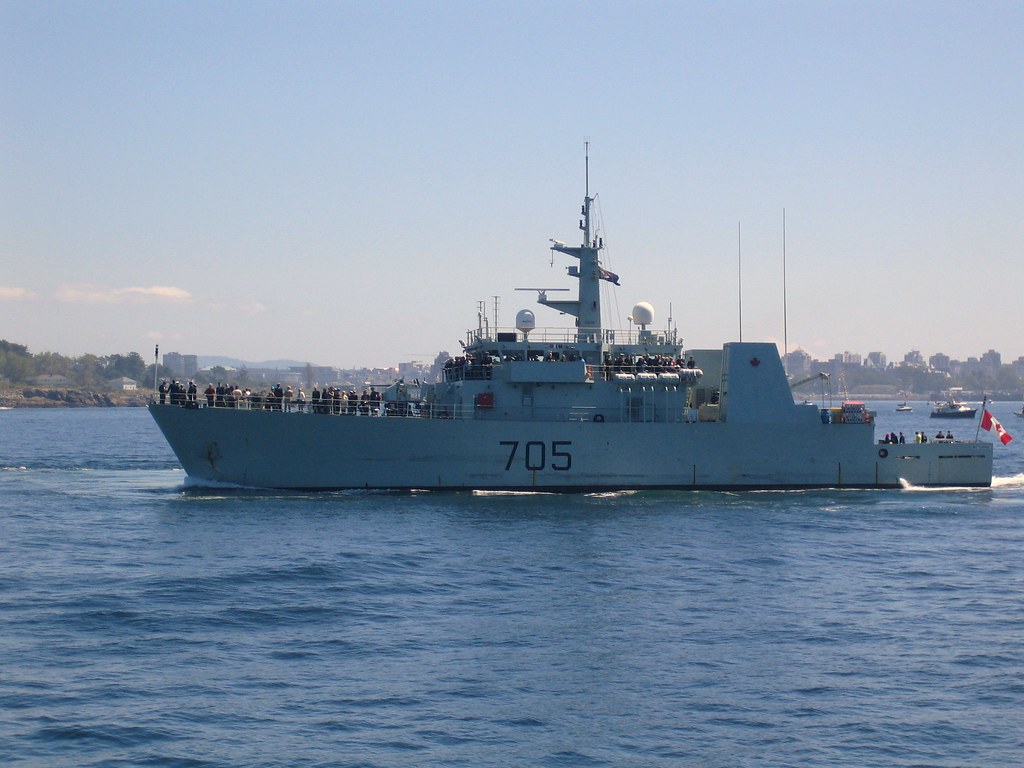Pointblank
Senior Member
HMCS Iroquois has been sidelined indefinitely due to corrosion in the machinery spaces :
Update to this story: the rust is worst than expected. Some sections of the ship have lost up to 30% in average thickness. She's going to be tied up indefinitely until a decision is made to fix or retire her:
HALIFAX -- The Royal Canadian Navy has decided to keep one of its few destroyers tied up after assessing a string of rust patches on its hull and concluding it may not be safe to send out to sea.
Capt. Peter Ryan said naval engineers and architects reviewed the corrosion in an area that stretches between a couple of decks on HMCS Iroquois, which was sidelined in April after the rust was detected.
They are now trying to determine if the aging ship should be repaired or retired, leaving the navy fleet further diminished as more than a dozen other vessels undergo regular maintenance, modernization or repairs.
"They are looking at what they can consider for possible repair options ... (and) whether it can be fixed," Ryan said in an interview.
"Until they can figure out what to do for repair options, she will not sail."
He said the destroyer will be used for training until the navy determines its fate.
Images and video taken by divers and obtained by The Canadian Press through access to information legislation show more than a half dozen rust spots on the exterior of the ship and inside in an area behind the solid ballast. Many appear to be a few inches in length.
Another photo from the mezzanine deck indicates an average loss of thickness in the plate of up to 30 per cent and cautions that there is an "allowable loss" of only 20 per cent, according to the Naval Architecture and Material Engineering Non-Destructive Ultrasonic Inspection Report.
Ryan could not say how extensive the corrosion is or where it's exactly located, but said officials can't guarantee the ship or crew's safety so it won't leave the dock. He also couldn't say whether the navy has had to reassign other ships or withdraw from operations as a result of the problems with HMCS Iroquois.
Underwater video shows a swath of rust spots that appear to start about 0.6 metres below the waterline.
Cmdr. Jay Harwood, who oversees the fleet's engineering state, said in May that fixing the 42-year-old ship before it is due to be decommissioned might prove too expensive.
Analysts have said the loss removes a vital asset and certain capabilities from the fleet. The destroyers serve as command and control vessels, but are also the only naval ships that have long-range air defence missile systems.
With HMCS Iroquois unavailable and its sister ship, HMCS Algonquin, undergoing repairs from an accident in February, the navy has only one destroyer at the ready.
The navy is also without many of its Halifax-class frigates, which are undergoing a lengthy modernization program to add radar and command and control systems, while upgrading radar and missile capabilities.
This latest problem comes after fatigue cracks were found on HMCS Iroquois in February when the ship was in Boston. An engineering team travelled to the U.S. to inspect it and deemed it safe to return to its home port in Halifax.
Officials acknowledge that the rust problem could lead to the early decommissioning of the ship, which is due to be retired in the next few years and before any successor ships are in place.

